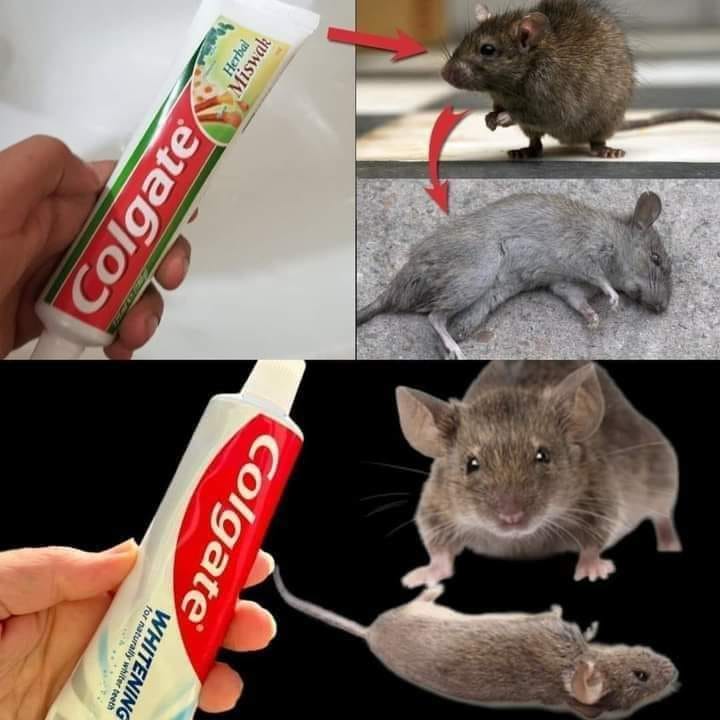Rodents rely heavily on their sense of smell to navigate and find food. Strong, unpleasant odors can confuse and irritate them, making your home an unattractive place to stay. Here are some of the most effective natural repellents you can use:
- Peppermint Oil: The strong smell of peppermint is overwhelming for rodents. You can soak cotton balls in peppermint oil and place them in areas where you’ve noticed rodent activity, such as in cabinets, behind appliances, or near entry points.
- Clove Oil: Similar to peppermint oil, the intense aroma of cloves is repulsive to mice and rats. Use clove oil in a similar fashion by placing soaked cotton balls in strategic locations around your home.
- Onions and Garlic: The strong odor of onions and garlic can help drive rodents away. Leave a few slices near the entrances and pathways where rodents tend to travel.
- Ammonia: The smell of ammonia mimics the scent of predator urine, which can scare rodents away. Place small dishes of ammonia in rodent-prone areas, but be sure to keep it out of reach of pets and children.
- Vinegar Spray: A mixture of white vinegar and water can be sprayed around the home to create a pungent smell that rodents dislike. It’s especially useful in kitchens and pantries.
2. Sound and Vibration Signals: High-Frequency Deterrents
Rodents are extremely sensitive to sound, especially high-pitched frequencies that humans can’t hear. Using sound signals, you can create an environment that is uncomfortable for them, encouraging them to leave the area.
- Ultrasonic Repellents: These devices emit high-frequency sound waves that are unbearable to rodents but undetectable to humans. By placing ultrasonic devices in key locations around your home, you can disrupt their communication and navigation systems, making them leave the area. These devices are especially effective in attics, basements, and garages, where rodents tend to hide.
- Vibration Deterrents: Rats and mice are also sensitive to vibrations. There are products available that generate low-frequency vibrations that simulate the presence of larger predators. These vibrations make rodents feel unsafe, prompting them to relocate.
- Clanging and Clattering Objects: If you prefer a DIY approach, try placing metallic objects in areas where rodents are active. When these objects are bumped or knocked over, they create sharp, loud noises that can scare away rodents. For example, you can hang tin cans near suspected entry points to create clanging noises when disturbed.
How to Implement the 2-Kilometer Rodent Repelling Method
Now that you have the tools—natural repellents and sound/vibration signals—it’s time to put them into action. Here’s a step-by-step guide to help you implement this method and drive mice and rats far away from your home.
Step 1: Identify Entry Points
Mice and rats typically enter homes through cracks, gaps, and holes in walls, floors, and foundations. Check your home’s exterior for any potential entry points and seal them off with caulk, steel wool, or mesh. Blocking entry points is crucial to ensure that once the rodents leave, they can’t come back.
Step 2: Apply Natural Repellents
Next, apply the natural repellents in areas where you’ve noticed rodent activity. This includes:
- Behind kitchen appliances like stoves and refrigerators.
- Inside cabinets and pantries.
- Near baseboards, windows, and doors.
- In attics, basements, and garages.
Use a combination of peppermint oil, clove oil, and vinegar spray to create an unpleasant environment for the rodents. Refresh the repellents every few days to maintain their potency.
Step 3: Set Up Ultrasonic and Vibration Devices
Place ultrasonic devices and vibration deterrents in areas where you suspect rodents are hiding or traveling. These devices will emit signals that are intolerable to rodents, disrupting their comfort and communication.
- Ultrasonic devices can be plugged into outlets in kitchens, garages, basements, and attics. Be sure to use enough devices to cover all areas of your home.
- Vibration deterrents can be placed near potential entry points or rodent nests, encouraging them to move further away.
Step 4: Monitor the Situation
After implementing these deterrents, monitor the situation over the next 10 days. You should begin to notice a reduction in rodent activity as they are driven away from your home. Continue to refresh the natural repellents and ensure the ultrasonic and vibration devices are functioning properly.
The Long-Term Impact: Keeping Rodents 2 Kilometers Away
By consistently using this method, you can not only drive rodents out of your home but also prevent them from returning. The combination of scent-based deterrents and high-frequency signals creates an environment that is inhospitable to rodents, making them relocate far from your property—potentially up to 2 kilometers away.
Maintenance Tips:
- Seal All Entry Points: Ensure your home is fully sealed so that rodents can’t re-enter.
- Keep Food Sealed and Stored: Properly store food in airtight containers to avoid attracting rodents.
- Maintain Cleanliness: Regularly clean your home to remove potential food sources and nesting materials.
Conclusion
Mice and rats are persistent pests, but with the right combination of natural repellents and signals, you can outwit them and drive them away from your home—up to 2 kilometers! This humane and effective method helps create an environment that rodents find unwelcoming, encouraging them to relocate without the need for harsh chemicals or traps.
Start implementing this strategy today, and enjoy a rodent-free home for the long term!
This article provides a detailed, natural approach to repelling rodents, encouraging readers to engage and stay informed. Let me know if you need any modifications!
